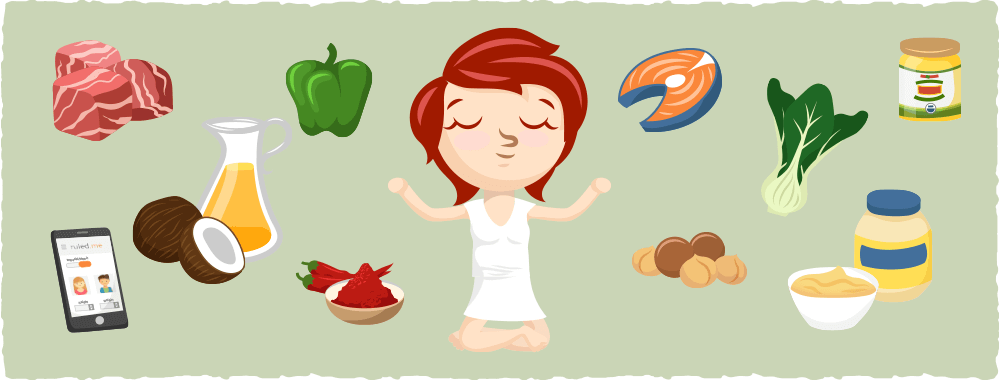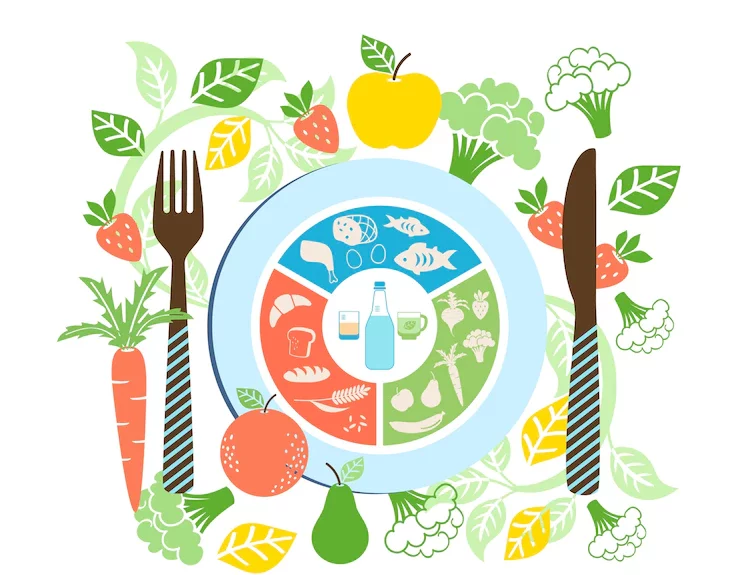
1. Calculate Your Macros and Adjust Plan
Calories are still something you need to consider on a ketogenic diet. While some people can get away with the “eat until full” philosophy, this doesn’t work for most people. There are tons of hormone, endocrine, and deficiency problems that we still need to take into account.
Use our keto calculator to figure out exactly how much you need to eat and adjust the plan to fit your needs. This meal plan averages 1538 calories, 120g fat, 24g net carbs, and 83g protein over the 2 weeks. If this is different to your macros, consider adjusting the plan to fit your needs.
To increase calories. If you need to increase the fat intake of the plan, add additional oil, cream, cheese, or cream cheese into your recipes; or drink coffee with cream with your first meal. If you need to increase protein, just increase the amount of lean meat that’s added into the recipe.
To decrease calories. If you need to decrease the fat intake of the plan, remove oil, cream, cheese, or cream cheese from the plan. Similarly, if you need to decrease the protein intake of the plan, remove some lean meat that’s added to the recipes.
2. Prepare and Get Ready Ahead of Time
You want to keep your cheats to none. Be prepared, make sure you’re eating what you need in order to be satiated, and make sure you’re satisfied with what you’re eating. If you have to force yourself to eat something, it will never work out in the end. This is just a guideline on how you can eat on a ketogenic diet, so you’re very welcome to change up what kind of foods you eat!
Set a start date. Be realistic with yourself and set a date you want to start. Make sure to get the shopping ready for when you start so that there’s no missing ingredients or surprises. Commit yourself to follow the plan fully and stick to the start date you determine.
Re-organize your fridge and pantry. With temptation looming each time you open the cupboard, it can be difficult to stick to your newfound dietary choices. Ketosis is a process that happens in your body. You can’t just have “that one” cheat meal. If you do, it can hamper progress for up to a week before your body is back in ketosis and burning fat again.
If possible, clear out any high-carb snacks and tempting items from your kitchen so that you can stay on track. There will likely be a few new keto ingredients you’ll need to purchase for the plan, so make sure you read ahead and stock up your fridge as needed.
3. Understand the Keto Flu
The Keto Flu is a combination of symptoms that happen when you first transition to a low-carb way of eating. You may get dizziness, headache, fatigue, cramping, nausea, or fatigue for a few days after starting your keto meal plan. Don’t worry, this is normal and there are ways to combat it.
Keto is also a diuretic and can cause dehydration. With the extra urination, you will deplete both water in your body and your electrolytes quicker. Your T3 (thyroid hormone) will decrease some, and your cortisol levels will raise up. Although the keto flu affects everyone differently, you may feel some of these symptoms but you can do something to reduce the symptoms or completely stop them.
Simply increase your water intake (or drink other keto-friendly beverages) and increase your electrolytes. You can use electrolyte supplements or take a multivitamin that includes potassium and magnesium. Additionally, add salt to your food (and/or water) to help.
4. Stop Mindless Snacking
Not only does snacking increase the number of calories you’re intaking per day, but it also creates insulin spikes each time you eat a small meal. It’s truly best to cut out all snacking when you’re on keto to see the best results. Keeping snacks to a minimum will allow your body to use your fat stores as energy and allow you to see success.
Last but not least, just do it. It’s fantastic to read, research, and plan but at the end of the day you just have to jump in and make sure that you start. Good luck!

Leave a Reply